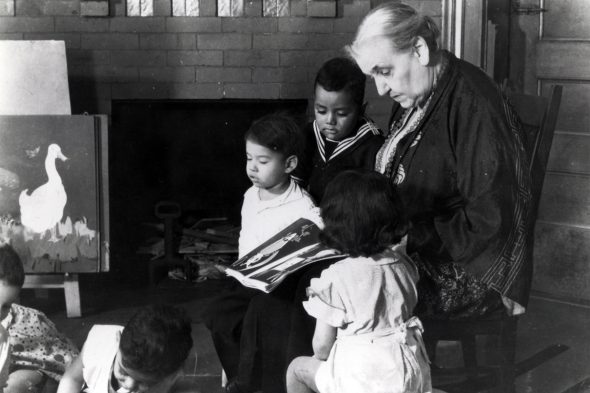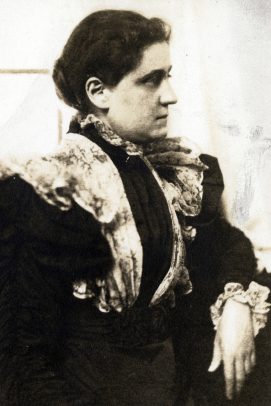Online library collection celebrates Hull-House on anniversary of founder’s death

To help commemorate the life of Jane Addams on the 87th anniversary of the Nobel Laureate’s death, the University of Illinois Chicago Library has released digitized yearbooks and annual reports from the settlement house she co-founded. The collection is now available online to students, researchers and the public.
Addams, who died on May 21, 1935, co-founded Chicago’s Hull-House with her partner, Ellen Gates Starr, in 1889. The home on the densely populated Chicago’s Near West Side was the first settlement house in the United States that offered social services to the communities. These services included legal aid, an employment office, child care, crafting and domestic skills training.
In 1931, Addams became the first American woman to be awarded the Nobel Peace Prize and was recognized as the founder of the social work profession in the United States.
What remains of the settlement is now the Hull-House Museum, which is on the UIC campus and is operated by UIC employees. The Jane Addams College of Social Work is one of UIC’s 16 colleges.

“The yearbooks, bulletins and annual reports are indispensable to understanding the work of Jane Addams and the Hull-House settlement,” said Pam Hackbart-Dean, head of special collections and university archives. “These publications highlight the founding and daily activities of the Hull-House, as well as Chicago history and progressive activism during the early 20th century.”
The “Hull-House Bulletins, Yearbooks and Annual Reports Collection” shows the scope of living and working among immigrant neighbors and how settlement residents hoped to learn from their surroundings and provide useful services and cultural activities for their neighborhood. Hull-House expanded from a single mansion into a 13-building complex spanning a city block. Its facilities included a gym, theater, art gallery, libraries, pools, classrooms, a kindergarten, playgrounds and dormitories.
Many of the settlement activities were documented in the Hull-House Bulletins. There are seven volumes published between 1896 and 1906. The original issues held in the UIC Special Collections and University Archives at the Richard J. Daley Library are available online to the public.
In the first issue of the bulletin published in 1896, Addams set down her rationale for beginning its publication: “As a student in a large school becomes interested in studies and methods outside his own pursuits, so at a settlement each member should learn to know other characters, thoughts and feelings. It has been said that ‘the cultivation of social life and manners is equal to a moral impulse, for it works to the same end…It brings men together, makes them feel the need of one another, be considerate to one another, understand one another.’”
She then wrote that the monthly bulletins would not only serve to advertise gatherings and promote cooperation among the various groups and “societies” within the walls of the settlement house but also to influence the neighborhood outside those walls and, “stimulate an interest in the public affairs of the Nineteenth Ward, and secure more unity of action towards their improvement.”
Also featured in the collection are Hull-House Yearbooks from 1906 to 1959 that have been digitized as well as Annual Reports from 1963 to 1999. The items are now all available online.
The publications digitized in the “Hull-House Bulletins, Yearbooks and Annual Reports Collection” are part of an extensive collection of photographs, oral histories and organizational records from the Hull-House collection assembled by UIC’s Special Collections Department beginning in 1966. The materials document the history of Hull-House from its founding in 1889 until the mid-1960s, when the settlement moved from its original location on Halsted Street. The materials have been collected from a variety of sources including members of the Hull-House Board of Trustees.
For more information or questions about the “Hull-House Collection” and the “Hull-House Bulletins, Yearbooks and Annual Reports Collection,” contact Special Collections and University Archives at 312-996-2742 or email via Ask a Librarian.
